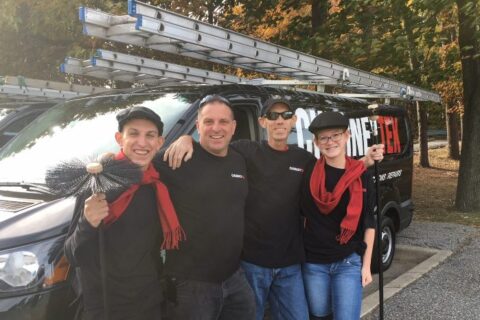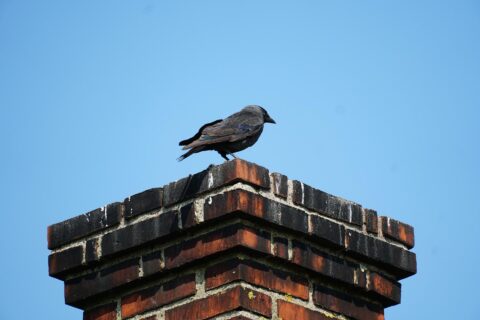The Dangers Of Creosote Buildup
Soot and ash aren’t the only things building up in your chimney when you use your fireplace. In order to keep your chimney system burning safely and efficiently, it is important to have the chimney swept at least once per year to remove any buildup of creosote, a potentially dangerous byproduct of combustion.
What is creosote?
Creosote is a naturally occurring byproduct of combustion. While most commonly found in wood-burning fires, all fuel burning fires can create creosote; coal, pellet, natural gas, and propane fires can all create creosote in small amounts.
Is creosote dangerous?
Unlike soot and ash, which merely make the fireplace and chimney dusty and dirty, creosote is potentially dangerous. The primary danger of creosote is that it is extremely flammable; in the United States alone, an estimated 25,000 chimney fires are caused by creosote ignition each year.
Preventing creosote buildup.
While small amounts of creosote are created in almost every fuel burning fire, there are ways to prevent excessive creosote buildup:
- Burning the right wood.
Wet, green, or freshly cut wood has a higher moisture content. When burning wet wood the fire must work harder, causing additional creosote to be created. Instead, burn well-seasoned hardwoods to minimize creosote production. - Quickly extinguishing fires.
Fires burning at low temperatures create more creosote; leaving a fire smoldering or burning at a low temperature for a long period of time can cause significant creosote buildup in the flue. This is most often seen in wood-burning stoves where the controlled temperature is set too low. - Having the flue resized.
Changes to the fireplace such as a new insert or changing fuel sources may necessitate having the flue resized. When the flue is either too large or too small, too much cold outside air can cause creosote to prematurely cool on the walls of the flue pipe.
Removing creosote.
Creosote buildup is dangerous and should be removed as soon as possible. For most homeowners, having your chimney swept at least once per year is the best way to remove creosote and keep your fireplace burning safely and efficiently.
Stage one and stage two creosote, which can easily be mistaken for soot and ash in the flue, can often be easily removed by a certified chimney sweep using specialized brushes. However, stage three creosote, also known as glazed creosote, is much more difficult to remove.
Stage three creosote has dried to create a hard, glassy finish on the inside of the flue. This not only makes it extremely difficult to remove,but can also cause damage to the flue liner underneath. Removing stage three creosote often requires the use of chemicals as well as special brushes and tools; if the creosote has been in the flue for a long period of time, the flue may need to be repaired or relined to remedy the damage.
Having your chimney swept each year is about more than just keeping it clean; it also removes harmful, dangerous creosote buildup. For more information about the dangers of creosote or to schedule your next chimney sweep appointment, contact ChimneyTEK today!



